Abstract
Little is known about smoking patterns of urban American Indians and their interest in quitting. Most published research has focused upon American Indians who live on rural reservations. In this study, personal interviews were conducted with a convenience sample of patients at Urban Indian Health Clinics in four geographically diverse sites: Milwaukee, WI, Minneapolis, MN, and Seattle and Spokane, WA. A total of 419 current smokers and 173 ex-smokers completed interviews. Current smokers reported a median cigarette consumption of 11 per day. Smokers indicated both a moderate desire to quit (mean 5.97, on a scale 0-10) and moderate confidence in their ability to do so (mean 5.56, on a scale 0-10). More than 70 percent of current smokers indicated having previously tried to quit. The most common reasons cited for relapse included craving, social situations, stress, and nervousness. The most common reasons for quitting given by ex-smokers included being "sick" of smoking, health concerns, respiratory problems, and pregnancy. The estimated quit-ratio (former smokers divided by current+former smokers) was 29.7 percent. This quit-ratio, although substantial, is lower than the 45 percent quit-ratio reported for the general U.S. population. Perhaps the most striking findings are the similarities between American Indians and the overall population in both interest in quitting and reasons for doing so. Smoking cessation previously has been viewed as a low priority for this population. The current results suggest the viability of systematic efforts to encourage urban American Indians to quit smoking.
Full text
PDF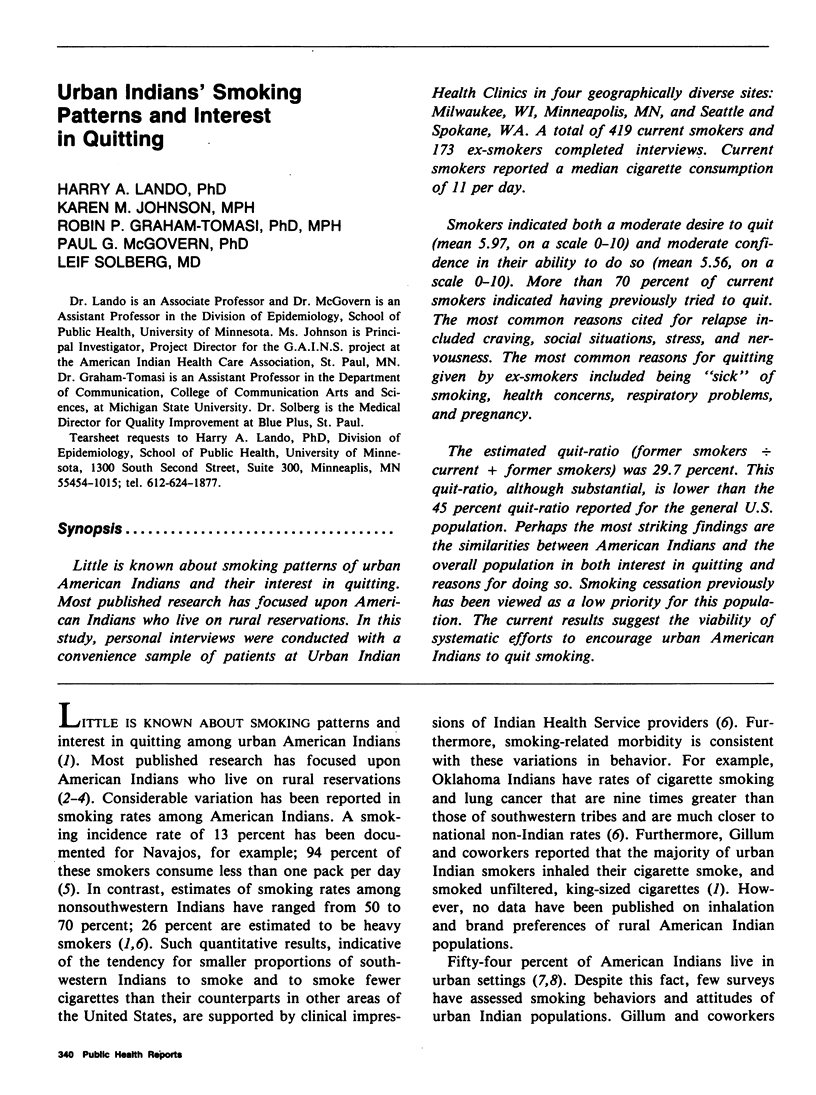
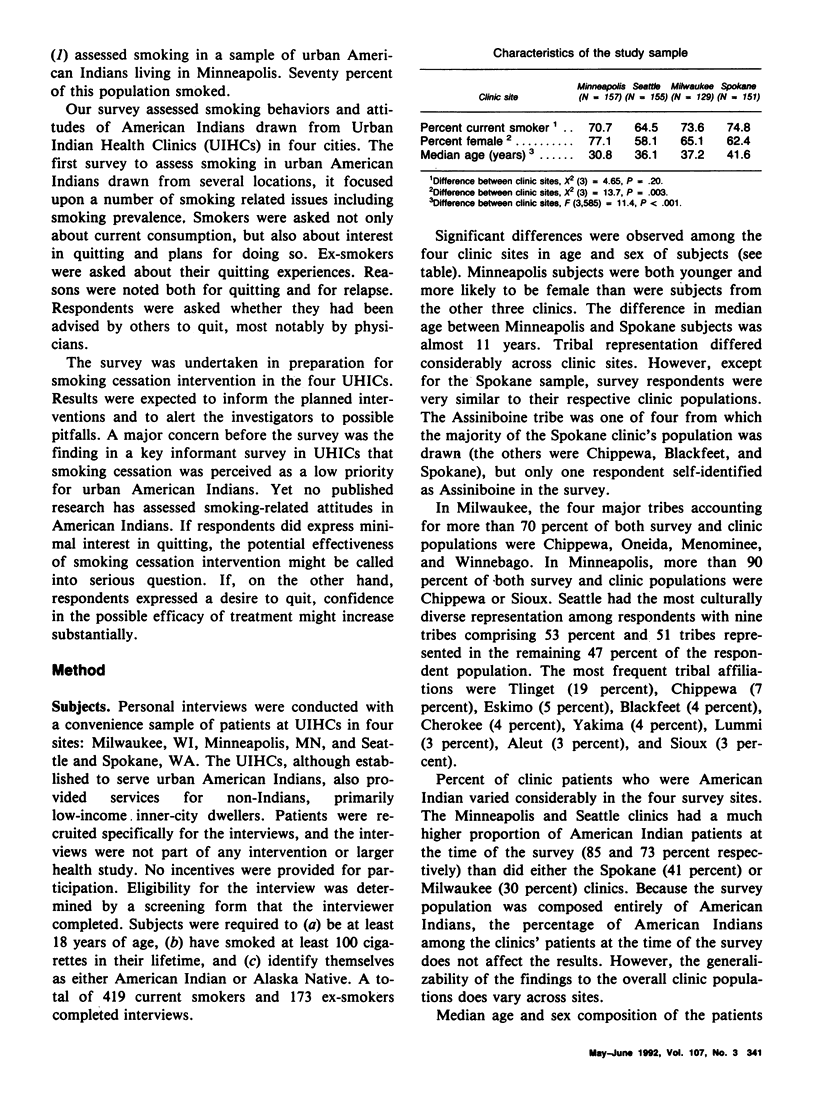
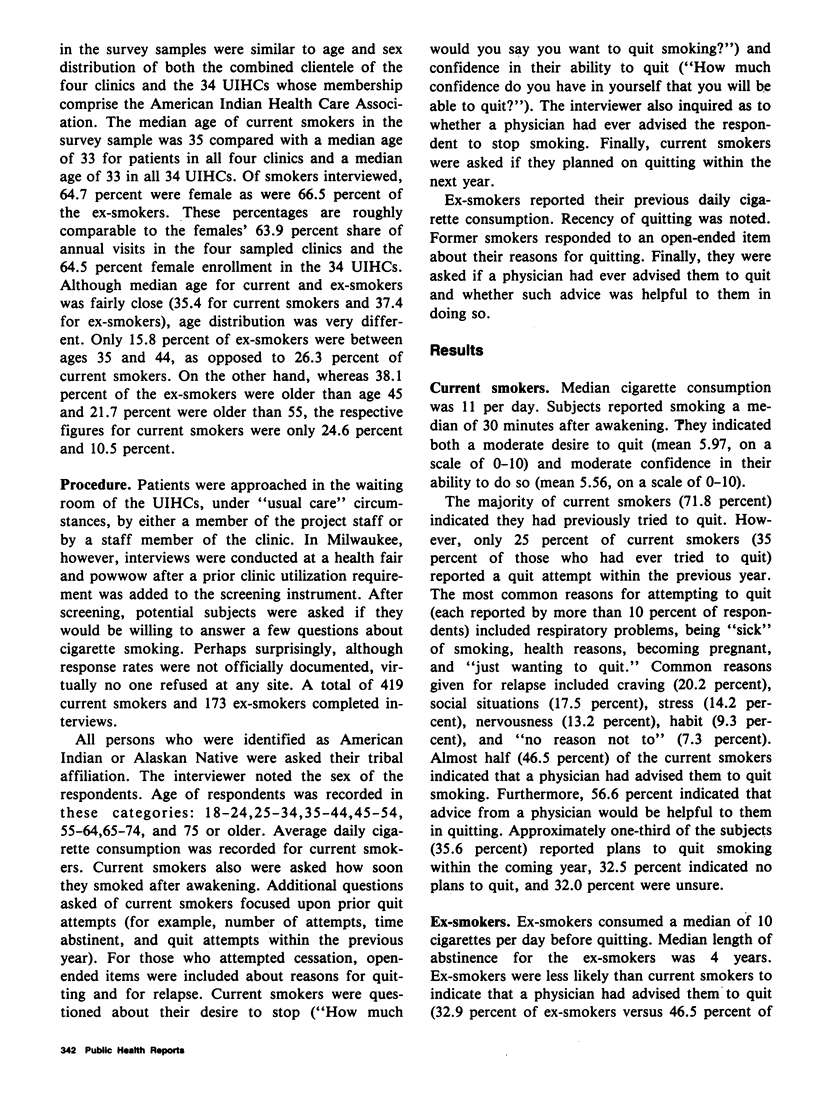
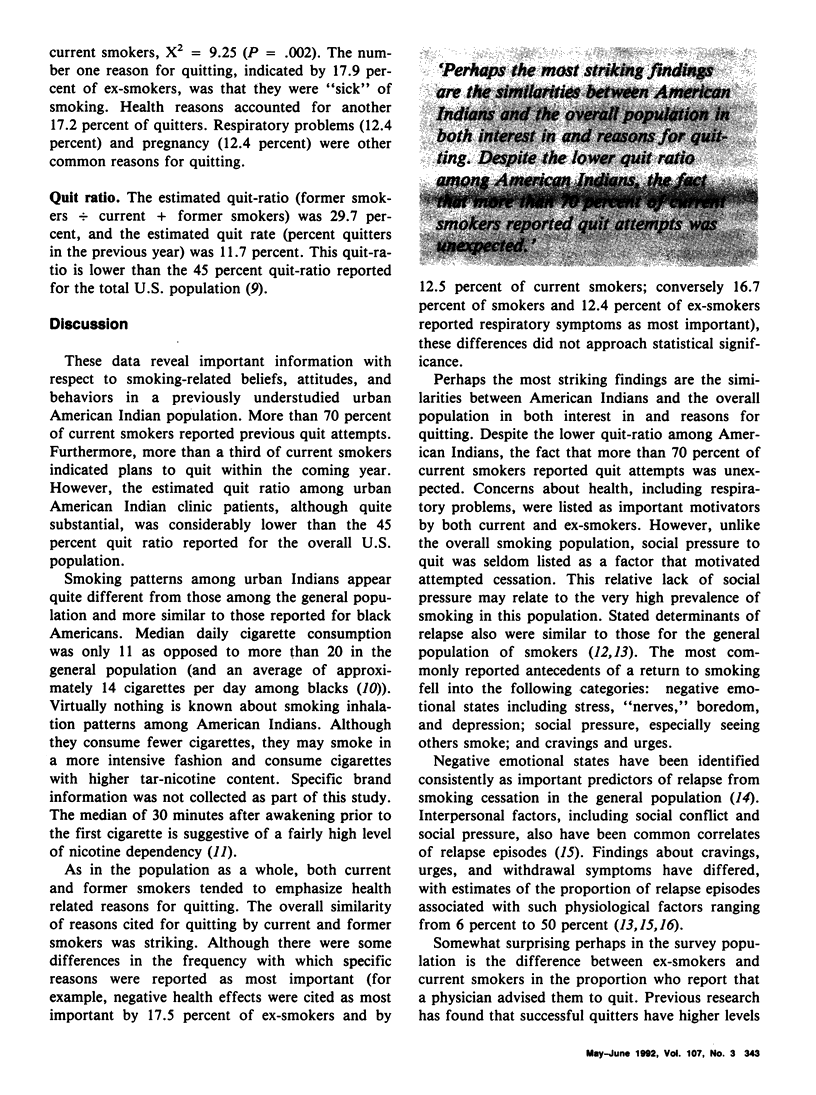
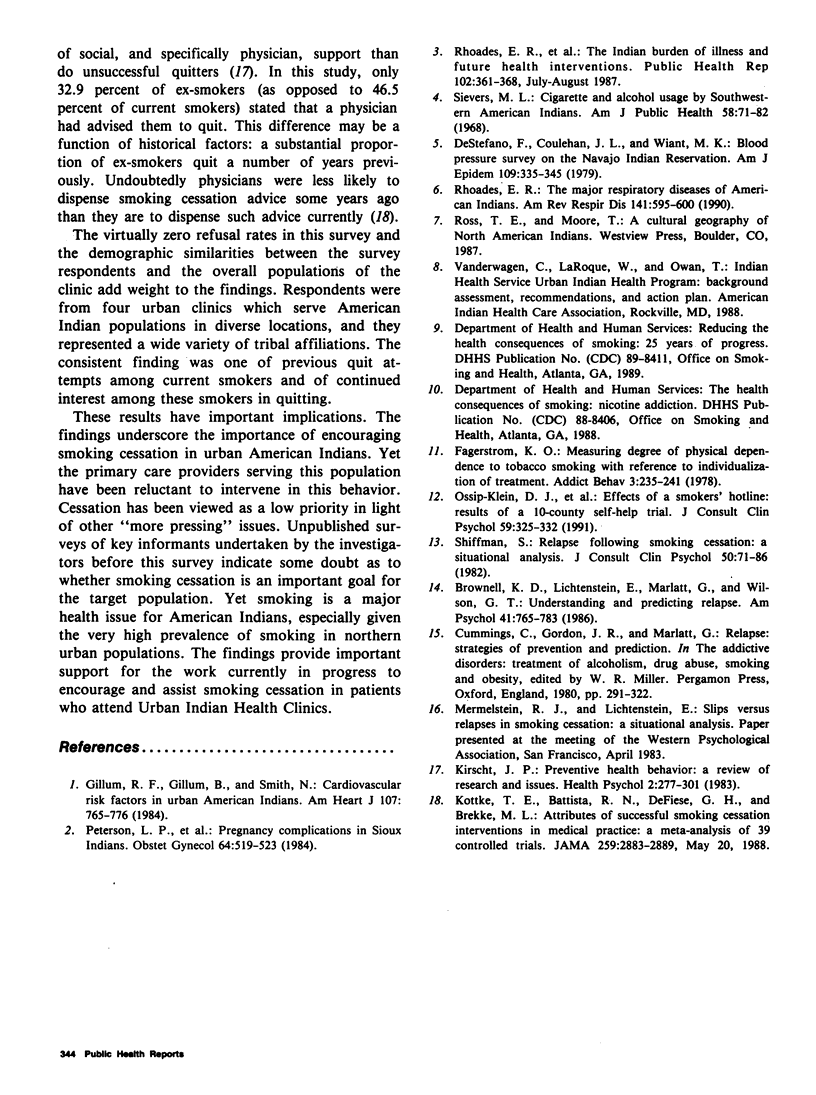
Selected References
These references are in PubMed. This may not be the complete list of references from this article.
- Brownell K. D., Marlatt G. A., Lichtenstein E., Wilson G. T. Understanding and preventing relapse. Am Psychol. 1986 Jul;41(7):765–782. doi: 10.1037//0003-066x.41.7.765. [DOI] [PubMed] [Google Scholar]
- DeStefano F., Coulehan J. L., Wiant M. K. Blood pressure survey on the Navajo Indian reservation. Am J Epidemiol. 1979 Mar;109(3):335–345. doi: 10.1093/oxfordjournals.aje.a112686. [DOI] [PubMed] [Google Scholar]
- Fagerström K. O. Measuring degree of physical dependence to tobacco smoking with reference to individualization of treatment. Addict Behav. 1978;3(3-4):235–241. doi: 10.1016/0306-4603(78)90024-2. [DOI] [PubMed] [Google Scholar]
- Gillum R. F., Gillum B. S., Smith N. Cardiovascular risk factors among urban American Indians: blood pressure, serum lipids, smoking, diabetes, health knowledge, and behavior. Am Heart J. 1984 Apr;107(4):765–776. doi: 10.1016/0002-8703(84)90326-0. [DOI] [PubMed] [Google Scholar]
- Kottke T. E., Battista R. N., DeFriese G. H., Brekke M. L. Attributes of successful smoking cessation interventions in medical practice. A meta-analysis of 39 controlled trials. JAMA. 1988 May 20;259(19):2883–2889. doi: 10.1001/jama.259.19.2883. [DOI] [PubMed] [Google Scholar]
- Ossip-Klein D. J., Giovino G. A., Megahed N., Black P. M., Emont S. L., Stiggins J., Shulman E., Moore L. Effects of a smoker's hotline: results of a 10-county self-help trial. J Consult Clin Psychol. 1991 Apr;59(2):325–332. doi: 10.1037//0022-006x.59.2.325. [DOI] [PubMed] [Google Scholar]
- Petersen L. P., Leonardson G., Wingert R. I., Stanage W., Gergen J., Gilmore H. T. Pregnancy complications in Sioux Indians. Obstet Gynecol. 1984 Oct;64(4):519–523. [PubMed] [Google Scholar]
- Rhoades E. R., Hammond J., Welty T. K., Handler A. O., Amler R. W. The Indian burden of illness and future health interventions. Public Health Rep. 1987 Jul-Aug;102(4):361–368. [PMC free article] [PubMed] [Google Scholar]
- Rhoades E. R. The major respiratory diseases of American Indians. Am Rev Respir Dis. 1990 Mar;141(3):595–600. doi: 10.1164/ajrccm/141.3.595. [DOI] [PubMed] [Google Scholar]
- Shiffman S. Relapse following smoking cessation: a situational analysis. J Consult Clin Psychol. 1982 Feb;50(1):71–86. doi: 10.1037//0022-006x.50.1.71. [DOI] [PubMed] [Google Scholar]
- Sievers M. L. Cigarette and alcohol usage by southwestern American Indians. Am J Public Health Nations Health. 1968 Jan;58(1):71–82. doi: 10.2105/ajph.58.1.71. [DOI] [PMC free article] [PubMed] [Google Scholar]


